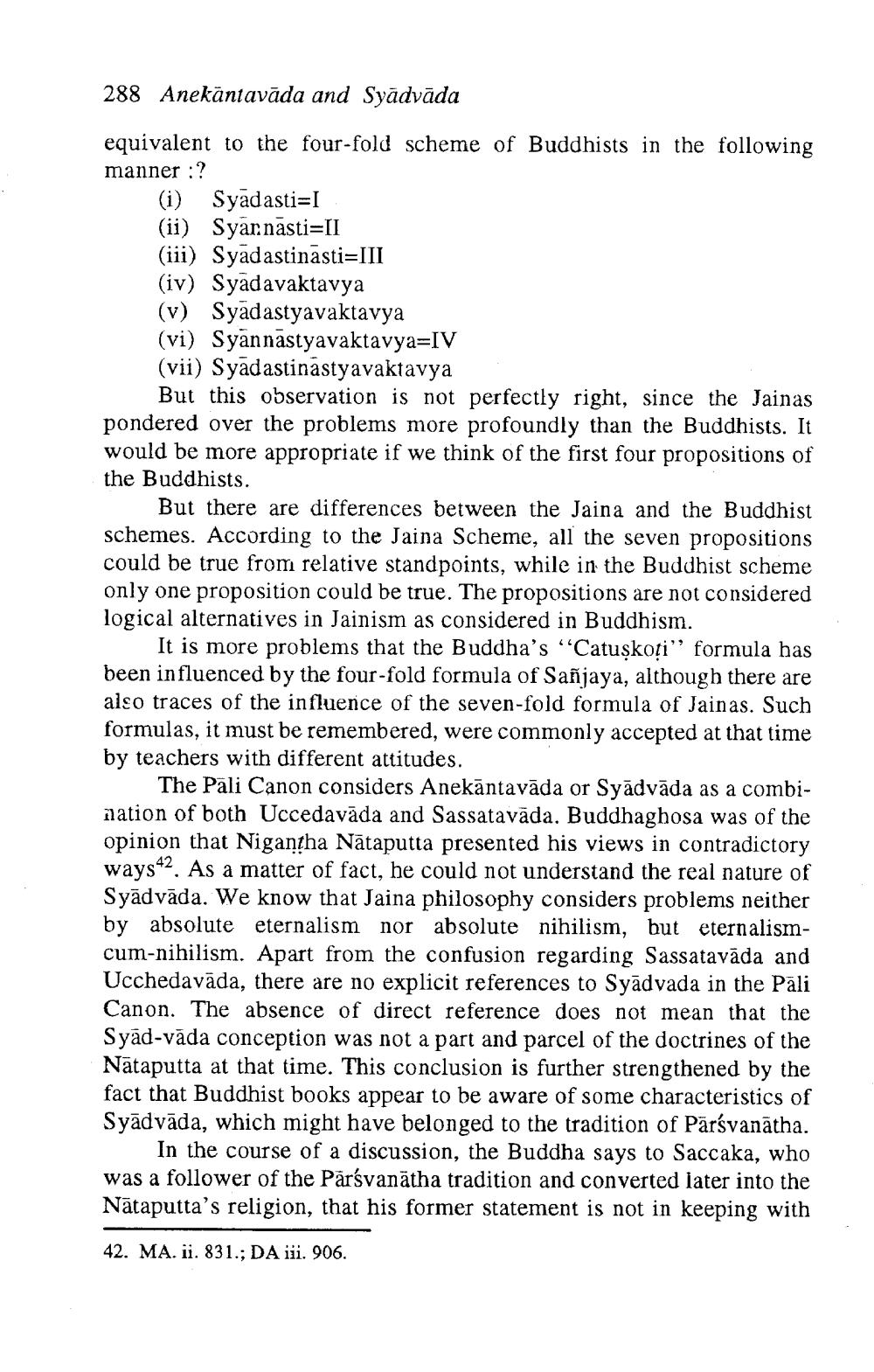________________
288 Anekāntavāda and Syādvāda
equivalent to the four-fold scheme of Buddhists in the following manner :?
(i) Syadasti=I (ii) Syarnāsti=II (iii) Syadastināsti=III (iv) Syadavaktavya (v) Syadastyavaktavya (vi) Syānnāstyavaktavya=IV (vii) Syādastinástyavaktavya
But this observation is not perfectly right, since the Jainas pondered over the problems more profoundly than the Buddhists. It would be more appropriate if we think of the first four propositions of the Buddhists.
But there are differences between the Jaina and the Buddhist schemes. According to the Jaina Scheme, all the seven propositions could be true from relative standpoints, while in the Buddhist scheme only one proposition could be true. The propositions are not considered logical alternatives in Jainism as considered in Buddhism.
It is more problems that the Buddha's “Catuskoți” formula has been influenced by the four-fold formula of Sanjaya, although there are also traces of the influence of the seven-fold formula of Jainas. Such formulas, it must be remembered, were commonly accepted at that time by teachers with different attitudes.
The Pali Canon considers Anekāntavāda or Syādvāda as a combination of both Uccedavāda and Sassatavāda. Buddhaghosa was of the opinion that Nigantha Nātaputta presented his views in contradictory ways42. As a matter of fact, he could not understand the real nature of Syädvāda. We know that Jaina philosophy considers problems neither by absolute eternalism nor absolute nihilism, but eternalismcum-nihilism. Apart from the confusion regarding Sassatavāda and Ucchedavāda, there are no explicit references to Syādvada in the Pali Canon. The absence of direct reference does not mean that the Syad-vāda conception was not a part and parcel of the doctrines of the Nātaputta at that time. This conclusion is further strengthened by the fact that Buddhist books appear to be aware of some characteristics of Syādvāda, which might have belonged to the tradition of Pārsvanātha.
In the course of a discussion, the Buddha says to Saccaka, who was a follower of the Pārsvanātha tradition and converted later into the Nātaputta's religion, that his former statement is not in keeping with
42. MA. ii. 831.; DA iii. 906.




